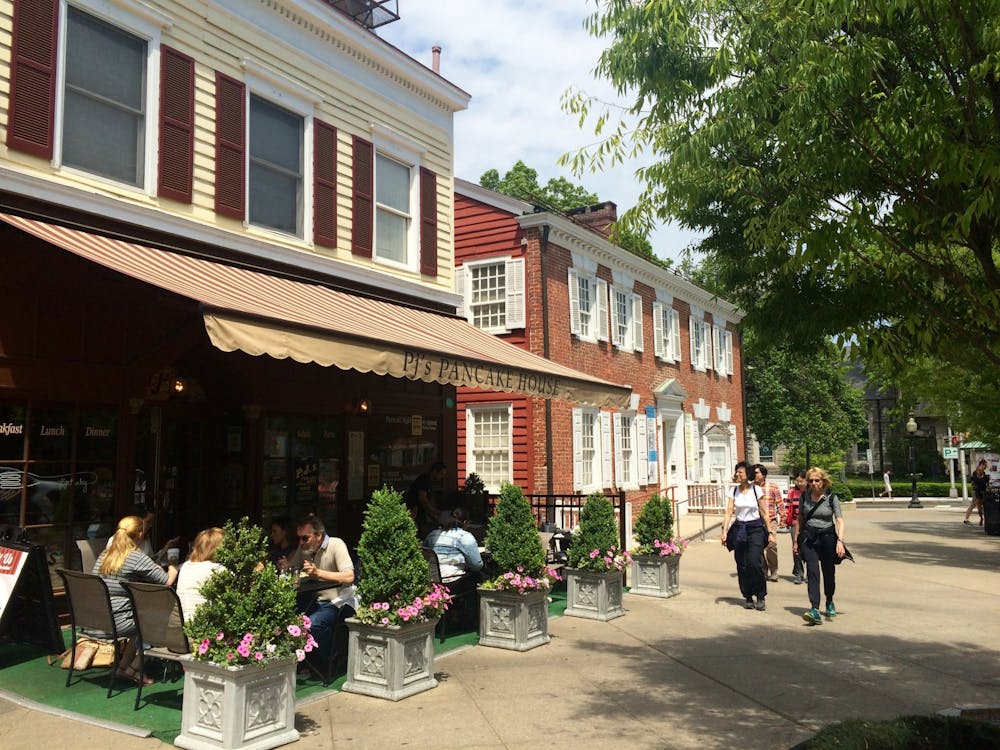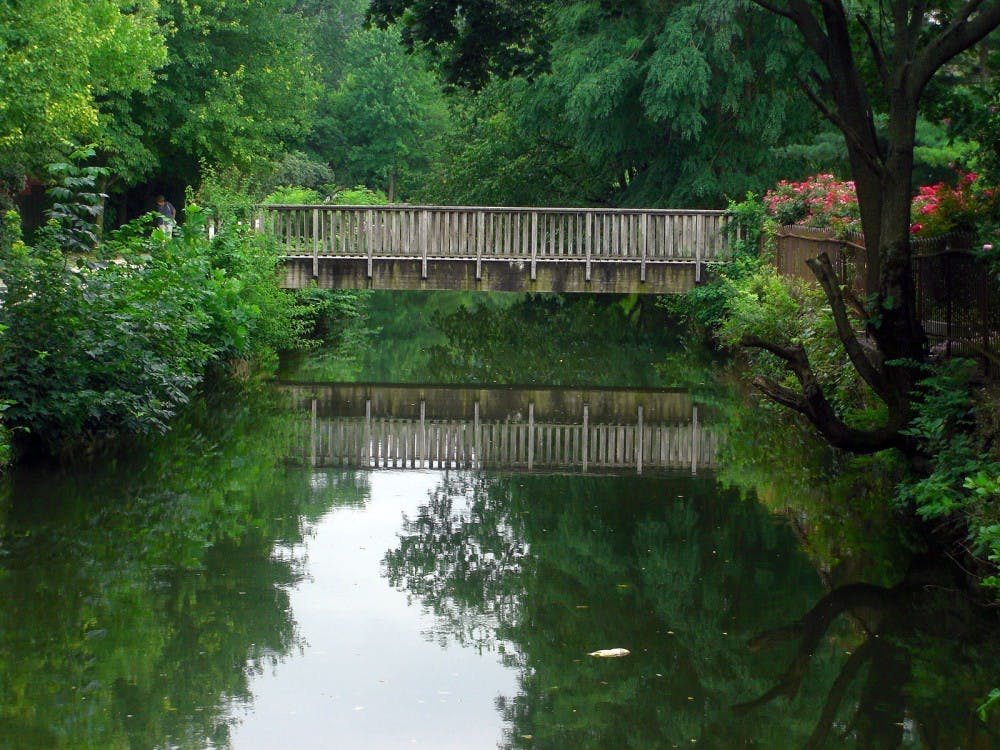Following the national trend, Princeton has seen an explosion in sushi restaurants since the mid-1990s. The Borough currently contains three sushi restaurants, Sakura, Ichiba, and the newly opened Waikiki, while two others offer a sushi section on their menu.
It's a deceptively simple food; a chef needs months to years to learn how to combine a slice of fish and a little ball of rice to create a piece of visual art that achieves the harmony of subtle flavors sought by enthusiasts.
A chef must become a finicky judge of fish, while the rice requires special preparation and a balance of vinegar and sugar to ensure that it enhances the fish's flavor without overpowering it.
Sushi restaurants typically offer three or four types of sushi: sashimi (slices of raw fish), nigiri (sashimi served on an elongated ball of rice), temaki (sashimi and rice placed in a conical roll of dried seaweed) and maki rolls (slices of sashimi or vegetables rolled up inside rice and wrapped with a paper-thin sheet of dried seaweed) popular with price-conscious study break organizers.
All of Princeton's restaurants do a decent job of offering a variety of types of sushi, but little of it measures up to the standards one could find in a larger city.
Waikiki illustrates the adage that expensive does not necessarily equate to high quality dining. The kitchen serves thoroughly mediocre food for prices that deserve something far superior.
Most of the fish at a recent lunch had an unpleasantly astringent, frankly cheap flavor, and the avocados in the California rolls came out an unappealing shade of brown.
The distinctly vinegary flavor of the sushi rice drowned out the milder fishes and vegetables, while the dipping sauce for the appetizer dumplings appeared to be solely a mixture of lemon juice blended with soy sauce. I have yet to taste a single dish I can wholeheartedly endorse.

The restaurant's appearance is hardly more enticing to the eyes than its food is to the palate. The kitchen is nominally open, but the partition is sufficiently high that only the basketball team will ever see the sushi chefs at work.
An extraordinarily tacky monster photo of Hawaii entirely covers one wall, and in conjunction with the fake rock installation near the entrance earns Waikiki the rarely coveted "Chintziest Interior" award.
The service has overcome some initial rockiness to become adequate, though far from outstanding, but is still the restaurant's strongest selling point. In short, this restaurant offers little reason for making the trek down Nassau Street.
Ichiban, next to Mailboxes Etc. at the corner of Witherspoon Street and Hullfish Street, offers a better dining option.

Ichiban's fish is the best of the three restaurants reviewed here — it often has a rich texture and subtle flavors lacking elsewhere — although I am disappointed that the kitchen sticks to basic nigiri and maki and prepares few interesting sushi creations.
The restaurant's atmosphere has always rubbed me the wrong way. The black, fake lacquer chairs and tables evoke an '80s Chinese restaurant lost in a time warp, and I have found the service to be spotty on busy nights.
It caters mainly to middle aged couples, families and students trying to impress a date with a trip to the "fancy" sushi restaurant.
However, I've heard rumors that the place was frequented by Christie Todd Whitman before she moved to Washington, D.C., and I suppose that this qualifies Ichiban as Princeton's "celebrity hangout." I wonder if acting Gov. Donald DiFrancesco shares his predecessor's taste.
I might have given Ichiban three stars but for its terrible value. Prices are about twice those of Sakura, and there is nothing about Ichiban that can justify a student paying that difference. Still, I assume that wealthy locals will continue to patronize the place because its exterior looks somewhat fancier than do the facades of the competition.
I remember eating dinner at Sakura late one night when owner Albert Co received a call from an RA whose study-break sushi had not been delivered on time. Co uttered a few oaths, said he was working on it and hung up.
The RA called back a minute later and was treated to a string of expletives followed by the click of the receiver. When the phone rang a third time, Co picked it up, slammed it back down on the cradle without uttering a word to the caller and turned back to the business of making sushi.
I suppose that this sort of service can put some people off. But I find that it adds to the restaurant's appeal in the same way that the Soup Nazi made Seinfeld's restaurant.
More importantly, Co compensates for his occasional temper by preparing decent, terrific value maki and nigiri sushi.
The fish he uses can run towards the bland side, but he offers an interesting selection of maki that contain various types of fish, vegetables, avocados, caviar and seaweed. These are usually beautiful to look at and better on the palate, but the $7 and up prices can be something of a deterrent.
They shouldn't be — a single roll can make a light lunch, and they will prove much more memorable than the basic sushi pieces most patrons order.
Except for the special rolls, Sakura prices are cheap, and the 10-piece sushi special is a deal at $7.95 including a bottomless, iceberg and under-ripe tomato salad.
I'm partial the college-hangout decor of wooden stools and a counter facing Witherspoon Street, but the place is nearly always bustling and it can be difficult to find a table during the lunch and dinner rushes. Don't let this deter you — the crowds are merely a symptom of Sakura's success as the all-around best of the three sushi joints in town.







